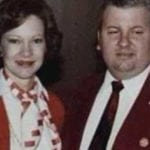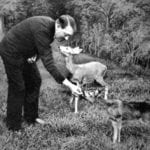 Movies and TV
Movies and TV  Movies and TV
Movies and TV  Health
Health 10 Miraculous Advances Toward Curing Incurable Diseases
 Miscellaneous
Miscellaneous 10 Undeniable Signs That People’s Views of Mushrooms Are Changing
 Animals
Animals 10 Strange Attempts to Smuggle Animals
 Travel
Travel 10 Natural Rock Formations That Will Make You Do a Double Take
 Movies and TV
Movies and TV 10 Actors Hidden in Your Favorite Movies
 Our World
Our World 10 Science Facts That Will Change How You Look at the World
 Pop Culture
Pop Culture 10 Incredible Female Comic Book Artists
 Crime
Crime 10 Terrifying Serial Killers from Centuries Ago
 Technology
Technology 10 Hilariously Over-Engineered Solutions to Simple Problems
 Movies and TV
Movies and TV 10 Movie Adaptions That Brought Popular Songs to Life
 Health
Health 10 Miraculous Advances Toward Curing Incurable Diseases
 Miscellaneous
Miscellaneous 10 Undeniable Signs That People’s Views of Mushrooms Are Changing
Who's Behind Listverse?

Jamie Frater
Head Editor
Jamie founded Listverse due to an insatiable desire to share fascinating, obscure, and bizarre facts. He has been a guest speaker on numerous national radio and television stations and is a five time published author.
More About Us Animals
Animals 10 Strange Attempts to Smuggle Animals
 Travel
Travel 10 Natural Rock Formations That Will Make You Do a Double Take
 Movies and TV
Movies and TV 10 Actors Hidden in Your Favorite Movies
 Our World
Our World 10 Science Facts That Will Change How You Look at the World
 Pop Culture
Pop Culture 10 Incredible Female Comic Book Artists
 Crime
Crime 10 Terrifying Serial Killers from Centuries Ago
 Technology
Technology 10 Hilariously Over-Engineered Solutions to Simple Problems
10 Shocking Photos From The Bitter Heart Of War
If the Earth could tell a story, what would it say? This planet has seen 14,500 wars since 3500 B.C. and watched 3.5 billion human lives cut short in the bitter arena of organized violence. War is the most enduring and tragic aspect of human culture, and at the heart of every blood-soaked conflict are the people—those who wage and those who suffer. We stumble on the bodies of the fallen, but we stand on the memory of their sacrifice.
SEE ALSO: 20 Incredible And Thought-Provoking World War II Photos
10The Japanese Soldier
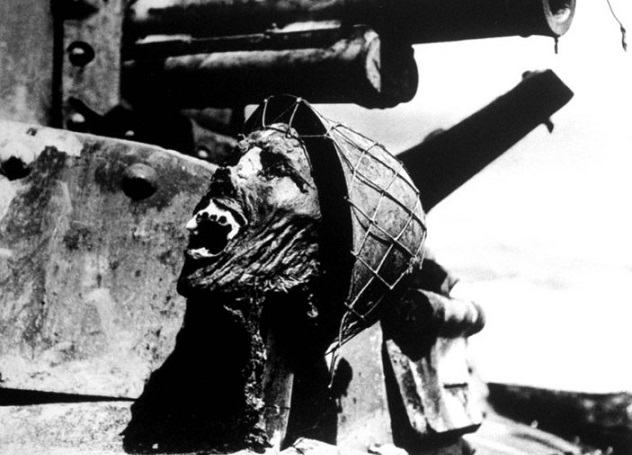
At the swirling center of the Pacific theater, a claustrophobic battle was unfolding on the tiny tropical island of Guadalcanal in 1942. Under a cloud of choking humidity, surrounded by swarms of mosquitoes so determined that they sometimes had to be cut out of a soldier’s skin, Allied forces fought an unseen enemy inch by inch through a nearly impenetrable wall of vegetation.
Tagging along with an American patrol unit, LIFE photographer Ralph Morse had an opportunity few civilians would ever want: a soldier’s-eye view of the caustic brutality of war. During one patrol, the company stumbled upon a disabled tank on a forlorn stretch of beach. Mounted just under the turret was the dessicated head of a Japanese soldier, mouth stretched wide in an eternal scream. The patrol gave it a wide berth—it was most likely booby-trapped.
This picture may have finally showed the world the casual barbarity that was becoming commonplace in the war. Although atrocities were happening all over the globe, the Pacific brought out the stark nature of the acts. While Japanese soldiers booby-trapped dead bodies, American forces beheaded corpses and mounted the heads on spikes. Both sides made necklaces of human teeth as trophies of war.
9The Bombing Of Massawa

May 29, 1991 marked the end of Eritrea’s 30-year struggle for independence from Ethiopia. Scarcely a year before that historic day, the Eritrean People’s Liberation Front (EPLF) began a massive offensive against the Ethiopian port city of Massawa, hoping to disrupt the Ethiopian army’s supply line. After three days of heavy fighting, the EPLF had managed to secure the city.
But Ethiopia wasn’t quite ready to give it up. For days on end, they blanketed the city in napalm and cluster bombs that took the lives of hundreds on the ground. A month later, the aerial bombing began again. As food stores and relief aid burned, civilians starved in huddled masses under improvised bomb shelters.
Most of the images and videos that came out of the massacre were too gruesome for the media, but this single image of an Eritrean man sitting on a bomb casing spoke louder than the most visceral images ever could. The bleak desolation in both the man’s eyes and his surroundings paints the lives of Eritrean citizens at that time with intricate brush strokes that will never fade from history.
8An Innocent Mistake
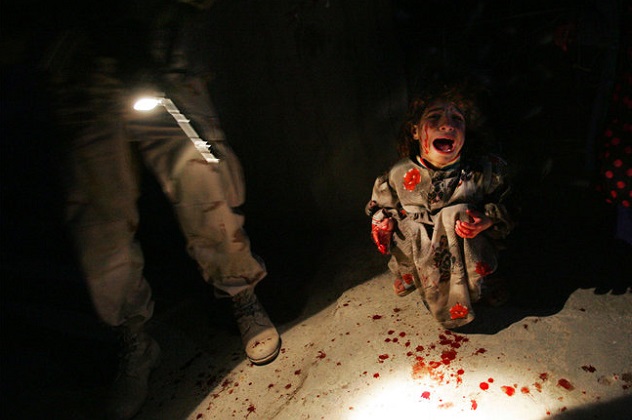
Taken by photographer Chris Hondros in Iraq in 2005, this unforgettable image illustrates the far-reaching consequences that can follow any act during wartime, proving that even accidents can leave you with blood on your hands that will never wash off. Hondros tagged along during a routine patrol in downtown Tal Afar, a city in northern Iraq, to hopefully grab a few photos of Apache Company doing their patriotic duty. As dusk settled in and the streets cleared for the 6:00 PM curfew, the company turned down a street and came across a car heading their way.
Edgy from a recent ambush, the soldiers fired a few warning shots with no visible reaction from the car’s occupants. It kept coming, so someone opened fire. Eventually, they all opened fire. As the car rolled closer, now just coasting on its momentum, they heard something more terrifying than an army of insurgents firing back: children crying.
Inside the car had been a family. It was a mother, a father, and four children, trying to get home before the curfew. They hadn’t seen the camouflaged soldiers, so they sped up when they heard the warning shots, a natural reaction to gunshots in an area where skirmishes can and do break out at any time. The children hadn’t been hit, but their parents were almost unrecognizable. Those children will forever bear the scars of the night their lives were irrevocably altered while the soldiers went back to base to play Nintendo.
7Rhodesian Interrogation
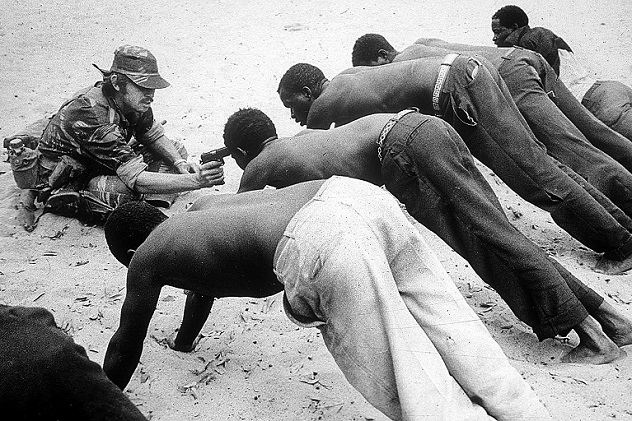
The Rhodesian Bush War doesn’t have a place in many history books. The conflict, which spanned 13 years from 1964–1979, was the climax of social tension that had been brewing for nearly two centuries, beginning with the colonization of southern Africa by white settlers near the end of the 19th century.
As the Caucasian grip began to slip in the 1960s, African nationalists took up the cry of revolution and staged a bloody guerrilla war that coalesced into an all-out race war. The guerrillas saw their cause as one of liberation against foreign oppressors, while the predominantly white government viewed the increasing attacks as terrorist insurgency. Farms and homesteads in the outskirts were the hardest hit—after the first brutal attacks, white farmers settled into a siege mentality. While the men worked, the women defended the home.
The Rhodesian government retaliated mercilessly. On many occasions, they killed civilians in their quest to hunt down and eradicate the slippery guerrilla forces. When guerrillas were captured, they were put through grueling interrogations that often crossed the line into torture. Journalist J. Ross Baughman captured this photo of a government cavalry unit forcing prisoners to hold a push-up position at gunpoint for 45 minutes in the scorching midday sun. Each time a man fell shaking to the ground, soldiers took him around a corner, knocked him out, and fired a gunshot into the air. By the end of the interrogation, the remaining prisoners were psychological wrecks.
6Clean-Up At Cold Harbor
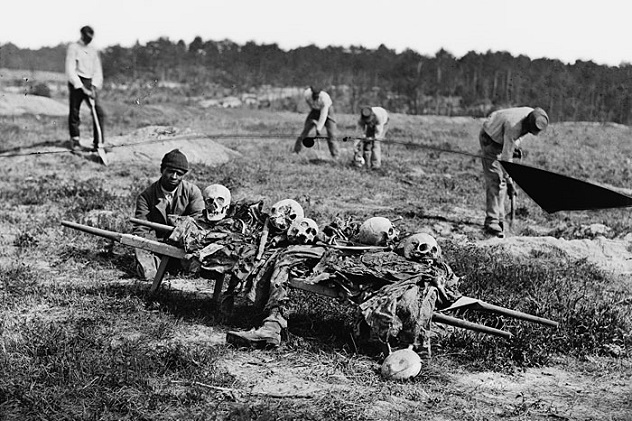
Described by the Library of Congress only as “African-Americans collecting bones of soldiers killed in the battle,” this photo offers a morbid glimpse into a war that is too often remembered only for its generals. The two weeks of horror that were the Battle of Cold Harbor began on May 31, 1864 and resulted in over 18,000 casualties. And it was all for nothing—as General Grant later said, “no advantage whatever was gained to compensate for the losses we suffered.”
For four days after the battle, the wounded and dying were left to fester under the open sky while the officers in their tents drafted an agreement to allow medics to venture into the wasteland to tend to their wounded. By the time they arrived, it was too late—most of the men had died. The medics were recalled and the clean-up crews were sent instead. Stretcher after stretcher was filled with soldiers who had fought their last fight.
5Siffleet’s Beheading
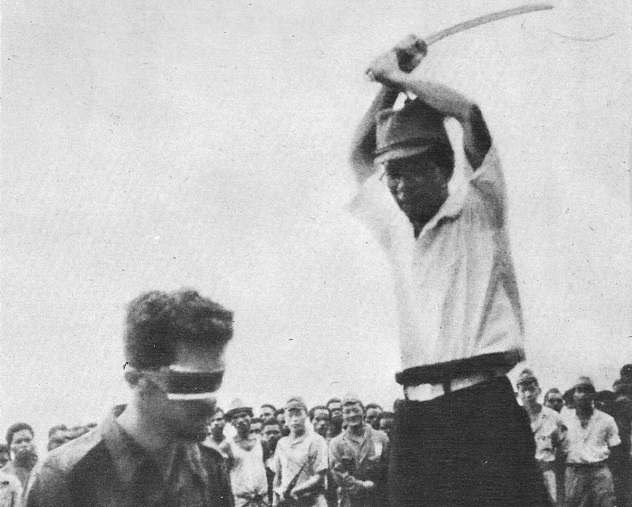
When this photo was first published in LIFE magazine, the cry of indignation was felt around the world. The man in the picture is believed to be Australian Sergeant Leonard Siffleet. The photo, which was taken after Siffleet was captured during a recon mission in Papua New Guinea, was found in the uniform of a dead Japanese soldier the next year. Both of Siffleet’s companions were also beheaded.
Beheading was a fairly common form of execution for the Japanese in World War II, and it seemed that every falling blow rippled through the moral consciousness of the West. From single executions such as this to the three-day massacre at Changjiao, where 30,000 Chinese civilians were executed at the hands of Shonruko Hata, it began to seem like Japan was going to outpace Hitler as the most evil force at work in World War II.
4James E. Callahan

During the Vietnam War, a lethal section of Vietnam 80 kilometers (50 mi) north of Saigon called “War Zone D” served as a hiding spot for untold numbers of Viet Cong forces. Ambushes and firefights were common in the zone, and surprise skirmishes could easily turn into days-long battles amid the dense jungle undergrowth and rubber plantations.
On June 17, 1967, medic James E. Callahan was deep in War Zone D with a battalion of infantrymen when an ambush drove them to cover. The battle dragged on for three hours, and by the end of it, 31 men in the division had been killed and over 100 had been wounded.
As the bullets whistled overhead, Callahan sprang into action. Photographer Henri Huet captured the above photo as Callahan tried to save a dying soldier. The frantic desperation evident in Callahan’s face mirrored the popular American opinion of the war in Vietnam at the time, and the photo became one of the most famous to come out of Vietnam between 1955 and 1975.
3Invasion Of Inchon
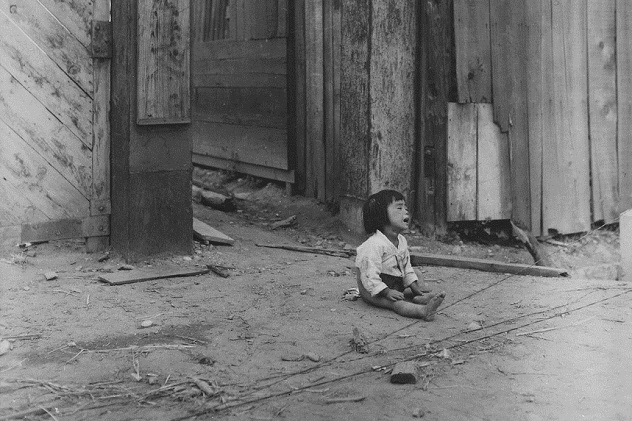
Every battle in every war comes at a terrible cost. Unfortunately, those most affected are usually the civilians who just want the fighting to end. This heart-wrenching photo from the invasion of Inchon, South Korea is a perfect testament to that fact.
The Korean War began on June 25, 1950, when the North Korean People’s Army (NKPL) launched an invasion of South Korea. Although the United Nations quickly stepped in to back South Korea, the North Korean forces secured victory after victory in their merciless push to the south. For months, the NKPL proved an unstoppable onslaught, and both the UN and South Korean forces were pushed all the way to the Pusan Perimeter at the lower edge of the Korean Peninsula.
Backed into a corner, the UN tried a desperate gamble—an amphibious assault on the port city of Inchon, right below the North Korean border, on September 15. With Inchon as a foothold, South Korea was able to recapture Seoul and turn the tide of the war, although there were still months of bloodshed to follow.
2Orange Legacy
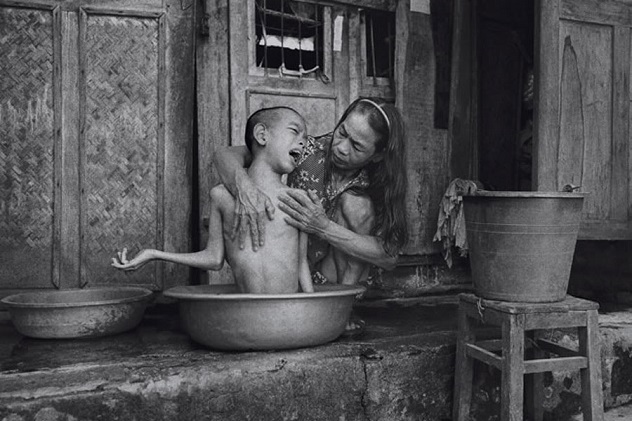
One of the continuing legacies of the senseless brutality of the Vietnam War was the use of Agent Orange, the infamous herbicide that was sprayed over Vietnamese foliage to flush out Viet Cong forces and destroy their food sources. The US army dropped approximately 75.5 million liters (20 mil gal) of Agent Orange over Vietnam and parts of Cambodia. Although the end of the war seemed to signal the end of suffering, life doesn’t always play fair.
Four and a half decades later, the people in the spray zone are still dealing with the debilitating effects of the dioxin contamination that seeped into their bodies and land. While Washington steadfastly refuses to take responsibility for the damage, the children and grandchildren of women who were exposed are being born with birth defects. The photo above shows a veteran of the Vietnam War bathing her 14-year-old son in 2006.
1Funeral For A Father
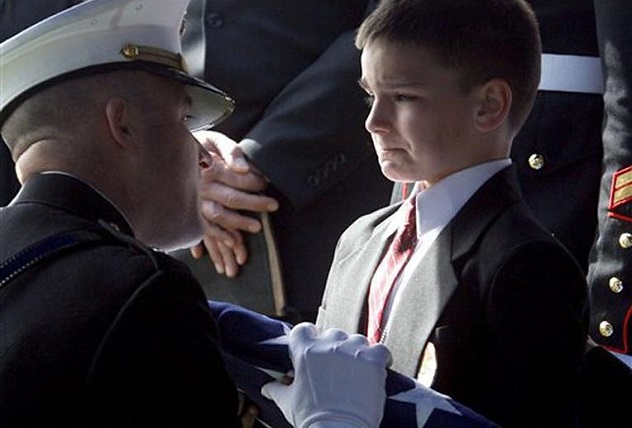
There’s no violence or gore in this picture. It’s not shocking in the usual, glaring sense of the word. It’s just a young boy with his head high and his chin strong, holding back tears as a soldier hands him a flag at his father’s funeral. But in its own way, it’s just as shocking as any photo snapped in the aftermath of a battle because it defines the people who still have their entire lives to feel the piercing heartbreak of loss.
The boy is Christian Golczynski, and he’s eight years old. His father, Marine Staff Sergeant Marc Golczynski, had been shot down while on a patrol in Iraq’s al-Aanbar province just a week before his tour of duty was supposed to end. With the whir of a shutter, Christian became the trembling face of a people without brothers, fathers, or sons. But hope is an indomitable force—inspired by his own loss, Christian has become involved in A Soldier’s Child, a charity organization that sends Christmas gifts to children who have lost parents in the line of duty.


![10 Creepiest Photos Of Victims Taken By Serial Killers [DISTURBING] 10 Creepiest Photos Of Victims Taken By Serial Killers [DISTURBING]](https://listverse.com/wp-content/uploads/2018/09/Regina-Kay-Walters-featured-2-150x150.jpg)
